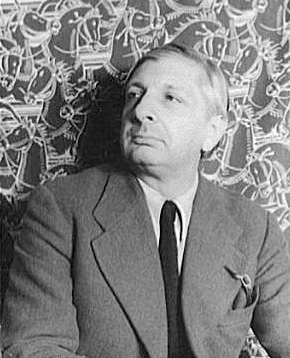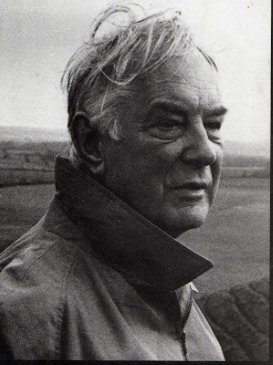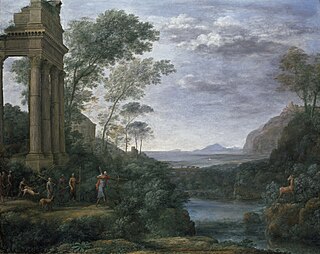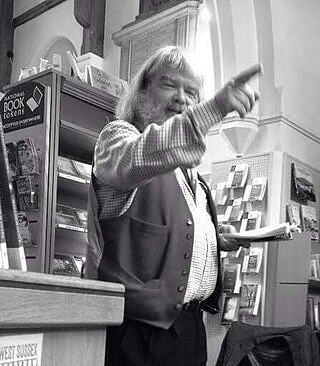Related Research Articles

An epigram is a brief, interesting, memorable, sometimes surprising or satirical statement. The word derives from the Greek ἐπίγραμμα. This literary device has been practiced for over two millennia.

William Blake was an English poet, painter, and printmaker. Largely unrecognised during his life, Blake has become a seminal figure in the history of the poetry and visual art of the Romantic Age. What he called his "prophetic works" were said by 20th-century critic Northrop Frye to form "what is in proportion to its merits the least read body of poetry in the English language". While he lived in London his entire life, except for three years spent in Felpham, he produced a diverse and symbolically rich collection of works, which embraced the imagination as "the body of God", or "human existence itself".

Guillaume Apollinaire was a French poet, playwright, short story writer, novelist and art critic of Polish descent.

The Ashmolean Museum of Art and Archaeology on Beaumont Street in Oxford, England, is Britain's first public museum. Its first building was erected in 1678–1683 to house the cabinet of curiosities that Elias Ashmole gave to the University of Oxford in 1677. It is also the world's second university museum, after the establishment of the Kunstmuseum Basel in 1661 by the University of Basel.

Gabriel Charles Dante Rossetti, generally known as Dante Gabriel Rossetti, was an English poet, illustrator, painter, translator, and member of the Rossetti family. He founded the Pre-Raphaelite Brotherhood in 1848 with William Holman Hunt and John Everett Millais. Rossetti inspired the next generation of artists and writers, William Morris and Edward Burne-Jones in particular. His work also influenced the European Symbolists and was a major precursor of the Aesthetic movement.

Sir Philip Sidney was an English poet, courtier, scholar and soldier who is remembered as one of the most prominent figures of the Elizabethan age.

Roger Eliot Fry was an English painter and critic, and a member of the Bloomsbury Group. Establishing his reputation as a scholar of the Old Masters, he became an advocate of more recent developments in French painting, to which he gave the name Post-Impressionism. He was the first figure to raise public awareness of modern art in Britain, and emphasised the formal properties of paintings over the "associated ideas" conjured in the viewer by their representational content. He was described by the art historian Kenneth Clark as "incomparably the greatest influence on taste since Ruskin ... In so far as taste can be changed by one man, it was changed by Roger Fry". The taste Fry influenced was primarily that of the Anglophone world, and his success lay largely in alerting an educated public to a compelling version of recent artistic developments of the Parisian avant-garde.

Giuseppe Maria Alberto Giorgio de Chirico was an Italian artist and writer born in Greece. In the years before World War I, he founded the scuola metafisica art movement, which profoundly influenced the surrealists. His best-known works often feature Roman arcades, long shadows, mannequins, trains, and illogical perspective. His imagery reflects his affinity for the philosophy of Arthur Schopenhauer and of Friedrich Nietzsche, and for the mythology of his birthplace.

Arnold Böcklin was a Swiss Symbolist painter. His five versions of the Isle of the Dead inspired works by several late-Romantic composers.
Frank Samuel Herbert Kendon was an English writer, poet and academic. He was also an illustrator, and journalist. A campaigning pacifist at the beginning of the 2nd World War, he had served in the 1st and termed himself a conscientious objector thereafter.

Geoffrey Edward Harvey Grigson was a British poet, writer, editor, critic, exhibition curator, anthologist and naturalist. In the 1930s he was editor of the influential magazine New Verse, and went on to produce 13 collections of his own poetry, as well as compiling numerous anthologies, among many published works on subjects including art, travel and the countryside. Grigson exhibited in the London International Surrealist Exhibition at New Burlington Galleries in 1936, and in 1946 co-founded the Institute of Contemporary Arts. Grigson's autobiography The Crest on the Silver was published in 1950. At various times he was involved in teaching, journalism and broadcasting. Fiercely combative, he made many literary enemies.

Metaphysical painting or metaphysical art was a style of painting developed by the Italian artists Giorgio de Chirico and Carlo Carrà. The movement began in 1910 with de Chirico, whose dreamlike works with sharp contrasts of light and shadow often had a vaguely threatening, mysterious quality, "painting that which cannot be seen". De Chirico, his younger brother Alberto Savinio, and Carrà formally established the school and its principles in 1917.

Gai Qi, courtesy name Bowen 伯蕰, art names Qiliang 七郎 and Yuhu Waishi 玉壶外史, was a poet and painter born in western China during the Qing dynasty. As an artist, he was active in Shanghai. His paintings mainly concerns plants, beauty, and figures. However, he also did numerous landscapes. In poetry, he preferred the rhyming ci form and added such poems to his paintings.
James Henry Cecil Collins MBE was an English painter and printmaker, originally associated with the Surrealist movement.

Sonnet 62 is one of 154 sonnets written by the English playwright and poet William Shakespeare. It is a member of the Fair Youth sequence, addressed to the young man with whom Shakespeare shares an intimate but tormented connection. This sonnet brings together a number of themes that run through the cycle: the speaker's awareness of social and other differences between him and the beloved; the power and limitations of poetic art; and the puzzling sense in which love erases the boundaries between individuals.
Sonnet 101 is one of 154 sonnets written by the English playwright and poet William Shakespeare. It is a member of the Fair Youth sequence, in which the poet expresses his love towards a young man. The three other internal sequences include the procreation sonnets (1–17), the Rival Poet sequence (78–86) and the Dark Lady sequence (127–154). While the exact date of composition of Sonnet 101 is unknown, scholars generally agree that the group of Sonnets 61–103 was written mainly in the first half of the 1590s and was not revised before being published with the complete sequence of sonnets in the 1609 Quarto.

Sonnet 105 is one of 154 sonnets written by the English playwright and poet William Shakespeare. It is a member of the Fair Youth sequence, in which the poet expresses his love towards a young man.

Landscape with Ascanius Shooting the Stag of Sylvia is a painting of 1682 in oil on canvas by Claude Lorrain, a painter from the Duchy of Lorraine who spent his career in Rome. It was painted in Rome for Prince Lorenzo Onofrio Colonna (1637–1689), Claude's most important patron in his last years, and is now in the Ashmolean Museum, Oxford. It is signed, dated with the year, and inscribed with the subject, as Claude sometimes did with his less common subjects.

Ayodeji Malcolm Guite is an English poet, singer-songwriter, Anglican priest, and academic. Born in Nigeria to British expatriate parents, Guite earned degrees from Cambridge and Durham universities. His research interests include the intersection of religion and the arts, and the examination of the works of J. R. R. Tolkien, C. S. Lewis and Owen Barfield, and British poets such as Samuel Taylor Coleridge. He was a Bye-Fellow and chaplain of Girton College, Cambridge, and associate chaplain of St Edward King and Martyr, Cambridge. On several occasions, he has taught as visiting faculty at several colleges and universities in England and North America.
"Y Llafurwr", known in English as "The Ploughman" or "The Labourer", is a poem in the form of a cywydd by the 14th-century Welsh poet Iolo Goch. Often compared with William Langland's Middle English Piers Plowman, it presents a sympathetic portrayal of the meek and godly ploughman; no other Welsh bardic poem takes an ordinary working man as its subject. It has been called the most notable of Iolo's poems, comparable with the finest works of Dafydd ap Gwilym, and its popularity in the Middle Ages can be judged from the fact that it survives in seventy-five manuscripts. It is included in The Oxford Book of Welsh Verse.
References
- ↑ Katherine Eustace, Roger Wagner Paintings, Anthony Mould (1995)
- ↑ Aitken, Robin (1 February 2025). "'Innovation is not enough': meet visionary English painter Roger Wagner". The Spectator . Retrieved 2 February 2025.
- ↑ Richard Harries, The Image of Christ in Modern Art, Ashgate (2013) p147
- ↑ Peter Levi, In a Strange Land, Anthony Mould (1988)
- ↑ Anne Wroe, Six Facets of Light, Jonathan Cape (2016), p179
- ↑ Samuel Johnson, Lives of the Most Eminent English Poets, vol. 1 (1779)
- ↑ Rowan Williams, The Guardian, Books 31 January 2004